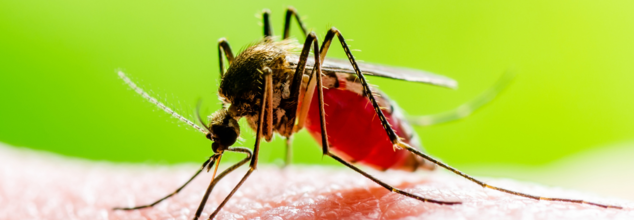- Health Conditions A-Z
- Health & Wellness
- Nutrition
- Fitness
- Health News
- Ayurveda
- Videos
- Medicine A-Z
- Parenting
- Web Stories
Malaria Still An Endemic In 83 Countries

Credits: Canva
As of April 2025, the World Health Organization (WHO) has officially certified 45 countries and one territory as malaria-free. Among the 83 countries where malaria is still present, 25 reported fewer than 10 cases in 2023—a sign of significant progress in controlling the disease.
Over 2 Billion Cases Prevented Since 2000
According to the WHO, global efforts since the year 2000 have prevented more than 2 billion cases of malaria and nearly 13 million related deaths. These achievements reflect decades of public health campaigns, prevention programs, and treatment efforts, particularly in high-risk regions.
A Fragile Victory
Despite these milestones, WHO officials warn that progress against malaria is fragile. “The history of malaria teaches us a harsh lesson: when we divert our attention, the disease resurges, taking its greatest toll on the most vulnerable,” said Dr. Tedros Adhanom Ghebreyesus, Director-General of the WHO, in a statement released on April 25, 2025.
He added, “But the same history also shows us what's possible: with strong political commitment, sustained investment, multisectoral action, and community engagement, malaria can be defeated.”
New Tools in the Fight Against Malaria
The WHO has highlighted two major developments that offer renewed hope in the battle against malaria.
The first is the expanded use of new insecticide-treated mosquito nets. These next-generation nets are more effective than traditional pyrethroid-only nets. In 2023, they made up nearly 80% of all mosquito nets distributed in sub-Saharan Africa, a jump from 59% the year before.
The second development is the rollout of two malaria vaccines—Mosquirix and R21/Matrix-M—which are being administered in various African countries, including Nigeria. These vaccines represent a critical tool in reducing the number of malaria infections and deaths in high-risk regions.
The Situation in the United States
In the U.S., malaria is no longer a widespread health concern. However, most reported cases are linked to travelers returning from countries in Africa. For instance, Florida has seen several cases tied to international travel.
Despite the global rollout of malaria vaccines, neither Mosquirix nor R21/Matrix-M is currently available in the United States. As a result, the Centers for Disease Control and Prevention (CDC) advises travelers to take preventive measures. This includes avoiding mosquito bites through the use of repellents and protective clothing, and taking prescribed antimalarial medication when visiting countries where malaria is common.
What Is Malaria?
It is caused by a parasite that spreads to humans through the bites of infected mosquitoes. As per WHO, when an infected female Anopheles mosquito bites a human, the human shows symptoms of malaria. Once the parasites enter your body, they travel to the liver and mature. After a few days, the parasites enter the bloodstream and start to infect the red blood cells. Within 48 to 72 hours, parasites multiply and cause the infected cells to burst open.
Common Signs And Symptoms
- Shaking chills
- High fever
- Sweating
- Headache
- Nausea
- Vomiting
- Abdominal Pain
- Diarrhoea
- Anemia
- Muscle Pain
- Convulsions
- Coma
- Bloody Stools
While the world has made significant strides in reducing malaria’s reach, experts caution that continued vigilance is essential. New tools like improved mosquito nets and vaccines offer powerful support—but without sustained global effort, malaria could resurge.
The WHO’s message is clear: with coordinated action and long-term investment, malaria is a disease that can be not just controlled, but eliminated.
Do Covid-19 At-Home Tests Detect The New Variants?

(Credit-Canva)
In many ways COVID-19 has changed the way medicine and treatments work. During peak COVID wave, at-home test kits became a more accepted part of medical care for people, as stepping outside and visiting hospitals could also cause infection. As new strains of COVID keep mutating, many people have brought up concerns regarding the effectiveness of the at-home tests.
The concern is regarding the fact that these at-home test kits are equipped to diagnose the new strains or are there certain strains that can go undetected.
How At-Home COVID Tests Work?
If you start feeling sick with symptoms like a cough, fever, or runny nose, you might worry if it's COVID-19. A simple way to check is by using an at-home COVID-19 test. You can easily find these tests at drugstores, supermarkets, and online stores.
At-home COVID-19 tests are designed to find tiny parts of the SARS-CoV-2 virus, which causes COVID-19. These parts are called antigens. Rapid at-home antigen tests usually give you results in about 15 minutes. If your test is positive, it's very likely you have the virus.
It's important to know that these tests can sometimes give a false negative, meaning you could test negative but still have the virus. However, because these tests are quick and rarely give a false positive, they can be very useful if used correctly.
Do They Work Against New COVID Variants?
At-home COVID tests should work against newer versions of the virus, “The antigen, that the at-home tests look for has remained fairly stable even as the virus mutates and new strains of COVID develop”. Harvard Health experts explain that the part of the virus these tests look for stays pretty much the same, even as the virus changes. Research generally shows that these antigen tests are good at finding different COVID-19 variants.
In a comparative study published in the Microbiology Spectrum journals, researchers looked at 2 types of tests PCR test and rapid antigen tests (Ag-RDTs). They used FIA which is the flourescence immunoassay, a simple and rapid technique that is used to measure compounds like drugs, hormones and proteins and LFIA which is lateral flow immunoassay, that is also used to detect proteins, haptens (a type of molecules), nucleic acids etc. Both rapid tests were 100% accurate at finding the virus when there was a lot of virus in the sample. However, their ability to find the virus dropped to around 30% when there was only a small amount of virus present.
This study confirms that rapid antigen tests (especially FIA and LFIA) work almost as well as RT-PCR tests for finding SARS-CoV-2. The FIA test was particularly good for people who had the virus but no symptoms. Both rapid tests agreed strongly with the gold standard RT-PCR results.
When to Test for COVID?
Harvard Health experts advise using an at-home COVID test if you have respiratory symptoms like a cough, fever, or runny nose. She also suggests testing if you've been around someone with COVID-19, or if you're going to be near elderly people or those with weak immune systems who could get very sick from the virus.
In general, these tests are most effective when you have symptoms. One study found that certain at-home tests caught almost 90% of COVID cases in people with symptoms, but only about half of cases in people who had the virus but no symptoms.
If your test is positive, it means you have the virus. If it is negative, health authorities recommend taking another test 48 hours later to reduce the chance of a false negative.
If you have respiratory symptoms, these combination tests are an easy way to find out if you have the flu, COVID-19, or both, without needing to visit a doctor's office. You can also help public health efforts by reporting your test result (whether it's positive or negative) online.
The best way to protect yourself from both COVID-19 and the flu is to get vaccinated for both. Vaccines lower your risk of getting sick and developing serious complications if you do catch the viruses.
Wildfire Smoke Could Fuel Flu And COVID-19 Outbreaks

(Credit-Canva)
Wildfires are a big concern for US citizens. Since the beginning of 2025, 31,039 wildfires have consumed 1.3 million acres of US land, according to the National Interagency Fire Center. Wildfires are uncontrolled fires that burn wildland and often rural areas. These fires can exhaust forests, grasslands, and many other ecosystems. With the amount of smoke generated, wildfires can severely affect the health of people.
A new study suggests that wildfires might indirectly raise the risk of flu and COVID-19 outbreaks. The smoke from wildfires often forces people to stay indoors, and when more people are gathered in enclosed spaces, infectious diseases can spread more easily. This finding was recently published in the journal PLOS Climate.
Why Staying Inside Puts You at Higher Risk
When wildfires burn, the air outside gets filled with smoke, making people go indoors. This creates perfect conditions for illnesses like the flu to spread, as a researcher from Georgetown University explained. With more people packed together, germs can jump from one person to another more easily. But there's a simple way to lower this risk: just wearing a mask indoors can help a lot.
Following People's Movements During Wildfires
Researchers looked at mobile phone data to see where people went during wildfires. This data showed visits to over 4.6 million places across the U.S., both inside and outside. They focused on the wildfire season in Oregon and Washington in 2020. By checking air quality, they found the areas worst affected by smoke. During that time, especially in August and September 2020, widespread wildfires caused a lot of smoke in these states.
More People, More Risk
The study found a clear increase in indoor activities when the wildfires were burning. In counties across Oregon, indoor activity went up by 14%, and in Washington counties, it increased by almost 11%. Major cities also saw a significant jump: Seattle experienced a 16% rise, and Portland saw an 11% increase in people spending time indoors. This shift means more people were confined together.
Using computer models, the researchers confirmed that more people indoors raises the risk of infectious diseases spreading, especially for highly contagious illnesses like flu and COVID-19. But these models also showed that wearing masks indoors can help slow the spread. They found that even a small increase in mask wearing (just 10% more people) could lower the number of new cases during wildfires. In areas hit hardest by smoke, like parts of Oregon and Washington, more than half the people might need to wear masks to effectively control the disease.
Preparing for Health Risks in a Changing Climate
The researchers advise public health experts to be aware of this connection if wildfire smoke reaches their communities. They should also warn people about the higher risk of infection. The study emphasized that as we face more extreme weather events, our public health plans need to change. We have to address not just the direct environmental harm from wildfires, but also how people react and adapt to these emergencies. By understanding how people behave and planning for it, we can better protect everyone's health in a world where extreme events are becoming more common.
Skin Cancer Diagnoses See A Boost With The Help Of AI

(Credit-Canva)
Being one of the most common cancer diagnoses, skin cancer claims more than two people every hour. The Skin Cancer Foundation also specifies that having five or more sunburns doubles your risk of melanoma, which is a type of skin cancer. Despite the fact that people are often urged to wear sunscreen and take protection from heat, one in five Americans will develop skin cancer by the age of 70. However, the survival rate of melanoma is 99 percent, meaning if people can get it diagnosed early, they can get proper treatment. So, how can one get an early diagnosis?
An experimental AI tool called PanDerm shows promising results in accelerating the detection of melanoma and other skin conditions, according to a new study published in Nature Medicine. When doctors used PanDerm, it improved the accuracy of skin cancer diagnoses by 11%, and the accurate diagnosis of other skin conditions by almost 17%.
Enhancing Clinical Decision-Making
PanDerm is made in a way to assist doctors by helping them understand complex imaging data and make more confident and informed decisions. While a lot of people are skeptical of the use of AI and how it may impact human lives in the long rn, the study shows that using it to work alongside professionals can help us reach great medical heights.
Researchers explained the tool is built to work alongside medical professionals, making it easier for them to interpret difficult images and choose the right course of action with greater certainty. This support is especially important because about 70% of people experience some kind of skin condition, making it crucial to spot them early for better treatment outcomes.
How PanDerm Works
Developed by a global research team, PanDerm was trained on a massive collection of over 2 million skin images, using four different types of medical imaging. Unlike previous AI models that struggled to combine various data types, PanDerm was specifically created to identify a wide range of skin conditions. It uses images from tiny microscopic slides to wide views showing lesions and the surrounding skin.
Researchers also said that by training PanDerm with diverse data from different imaging techniques, they've created a system that can understand skin conditions similar to how dermatologists do—by combining information from various visual sources.
Impressive Performance and Future Potential
In the study, PanDerm was tested on various tasks related to skin health, including screening for cancer, counting moles, tracking changes in lesions, and diagnosing a broad spectrum of skin conditions. The AI consistently delivered strong results, often needing only 5% to 10% of the data that doctors typically require for diagnoses. This means it can provide accurate results with much less information.
This AI tool could be especially valuable in areas where it's hard to see a dermatologist, as researcher Peter Soyer pointed out. However, the researchers stress that PanDerm needs more evaluation and real-world testing in different healthcare settings and with various types of patients before it can be approved and widely used.
Treatment For Skin Cancer
The Cancer Research UK explains that when you have skin cancer, the main treatment is usually surgery. However, depending on where the cancer is, how big it is, and your overall health, you might have a different kind of treatment. Your doctor will discuss all the possible options with you.
Besides surgery, other treatments include radiotherapy, which uses high-energy rays similar to X-rays to kill cancer cells, often for basal cell carcinoma (BCC) and squamous cell carcinoma (SCC). You might also get a chemotherapy cream that uses strong drugs to destroy cancer cells, or Imiquimod cream (Aldara), which helps your body's own defenses fight the cancer.
For some types of skin cancer, doctors might suggest targeted drugs or immunotherapy. These treatments either attack specific parts of cancer cells or boost your immune system to help it kill the cancer. Another option is photodynamic therapy (PDT), which uses a special drug and light to destroy the cancer cells.
After you finish your skin cancer treatment, you'll need to have follow-up appointments to make sure everything is okay.
© 2024 Bennett, Coleman & Company Limited

